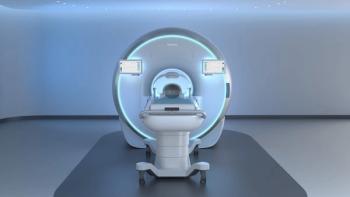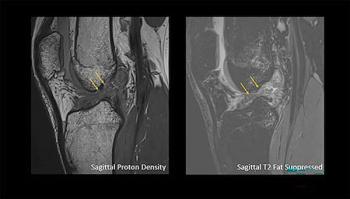
CT, MR-guided injections promise pain relief for sacroiliac joint lesions
Injections of corticosteroids and anesthetics guided by CT or MR imaging offer a reliable therapeutic option for the treatment of chronic lower back pain from sacroiliac joint lesions, according to researchers from Germany and the U.S.
Injections of corticosteroids and anesthetics guided by CT or MR imaging offer a reliable therapeutic option for the treatment of chronic lower back pain from sacroiliac joint lesions, according to researchers from Germany and the U.S.
Spondyloarthritis is a painful and debilitating type of rheumatoid arthritis of the spine. It hits particularly the sacroiliac joints, a primary source of lower back pain. Clinical diagnosis and treatment of the condition remain challenging, mostly because of the complexity of the sacroiliac joint anatomy. Cortisone injections can lessen sacroiliitis symptoms, but studies regarding their use and effectiveness are hard to come by.
Slow-release triamcinolone acetonide injections after CT-guided sacroiliac joint puncture can be an effective aid in the treatment of sacroiliitis, said principal investigator Dr. Kay-Geert Hermann, a radiologist from the Charité University of Medicine in Berlin.
Hermann and colleagues treated 47 patients with known unilateral or bilateral sacroiliitis who underwent 40-mg or 60-mg injections of the corticosteroid into the sacroiliac joint. The investigators evaluated patients' symptoms and adverse events daily during the first week and then at monthly intervals for a six-month follow-up period. They also split patients into two groups: In one, the puncture cannula was introduced in the joint; in the other, the cannula pierced a space outside the joint. An independent observer evaluated the images obtained at the end of the intervention.
Researchers found that only the intra-articular approach was reliable and successful.
Hermann attributed long-term treatment results to the adequate placement of the cannula and suggested a primary, though not exclusive, role for CT guidance.
In another study, researchers from Johns Hopkins and the Eberhard Karls University University of Tübingen proposed combining diagnosis and intervention in a one-stop shop approach to treat sacroiliitis. Principal investigator Dr. Jan Fritz and colleagues prospectively enrolled 42 patients who underwent a similar corticosteroid injection treatment, this time under gadolinium-enhanced real-time MR imaging with an open-bore 1.5T scanner.
They found the combined diagnostic and interventional approach feasible and cost-effective for the treatment of sacroiliac joint arthritis. Members of the audience, however, questioned the applicability of the technique in the U.S.
"Wait until next year," Fritz said.
Newsletter
Stay at the forefront of radiology with the Diagnostic Imaging newsletter, delivering the latest news, clinical insights, and imaging advancements for today’s radiologists.




























